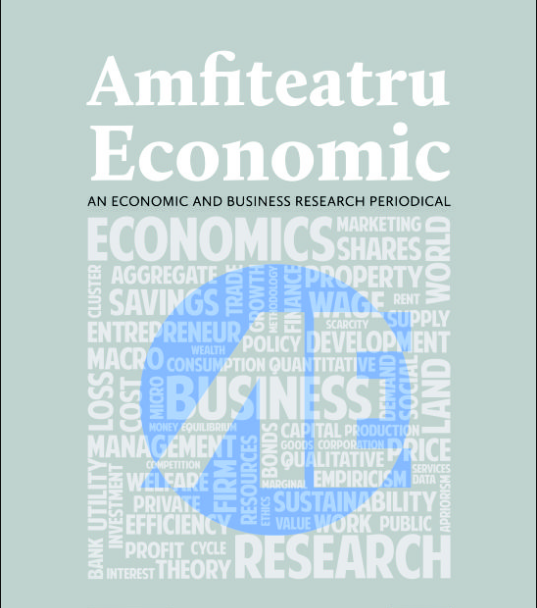DEVELOPMENT AND OPERATIONALIZATION OF A MODEL OF INNOVATION MANAGEMENT SYSTEM AS PART OF AN INTEGRATED QUALITY-ENVIRONMENT-SAFETY SYSTEM
DEVELOPMENT AND OPERATIONALIZATION OF A MODEL OF INNOVATION MANAGEMENT SYSTEM AS PART OF AN INTEGRATED QUALITY-ENVIRONMENT-SAFETY SYSTEM
Author(s): Dorin Maier, Astrid Fortmüller, Irmer Sven-Joachim, Andreea MaierSubject(s): Economy
Published by: EDITURA ASE
Keywords: integrated management systems; innovation management system; quality management system; the performance of organizations
Summary/Abstract: This paper attempts to give an economic perspective of the impact of the innovation industries. The estimation method used is that of panel data modelling, based on data from regions from European countries, including countries from Central and Eastern Europe, for which exploratory analysis was conducted on the effects of employment counts, number of companies, and wages per capita, in computer and related activities and research and development industries.Higher employment in both industries have positive effects on total employment and GDP/Capita. No sizable displaced workers effects can be seen, as higher employment and wages/capita in innovation industries are accompanied by higher employment and lower unemployment at regional level. Positive effects can be observed for both young and mature workers, and are stronger for the latter, pointing out to strong potential spillover effects. Number of local companies is not a relevant indicator for assessing the influence of research and development activities. All these effects point to the sustainability of innovation industries, which not only lead to increase of GDP per capita, but also show positive spillover effects, increase employment and reduce unemployment.The results for countries from Central and Eastern Europe (CEE) have been to some extent less significant, due to several objective factors. The results should also be viewed in the framework of the transition and catch-up period that characterizes the evolution of the CEE economies. The positive effects of strong growth are primarily reflected in GDP growth, and it may be that it takes a while for these effects to propagate in the rest of the economy in terms of job creation and sizable reduction of unemployment.While the current analysis revealed some of the first-round impacts of the innovation industries, much work remains to be done in matching these effects with other determinants of employment and unemployment, which can improve existing models with relevant empirical elements.The results of the research, presented in this article, have the purpose to contribute in the area of innovation management and its relation to other management systems. The research objective is to give to organizations a model of innovation management system as part of an integrated management system.Defining the model of innovation management system is based on the four perspectives of the balanced scorecard tool, namely: financial perspective, learning and development, internal processes and customers. In the process of defining the model several steps were taken, such as: literature review, data collection from the enterprise level through a questionnaire, analysis and correlation of data and finally the proposed model has been operationalized.In order to have a working model that can be easily adopted by any interested company, the research was deepen to the organizational processes, identifying nine processes specific for innovation that exist in an organization. Each of the nine processes have been operationalized using a SIPOC model (Suppliers − Inputs − Process − Outputs − Customers). The system for managing innovation may therefore have a positive influence on the ability and awareness of enterprises in innovation actions, and by defining this model the research conducted in this article helps to improve the efficiency of innovation, with direct implications in business performance.
Journal: Amfiteatru Economic
- Issue Year: 19/2017
- Issue No: 44
- Page Range: 302-314
- Page Count: 13
- Language: English, Romanian

